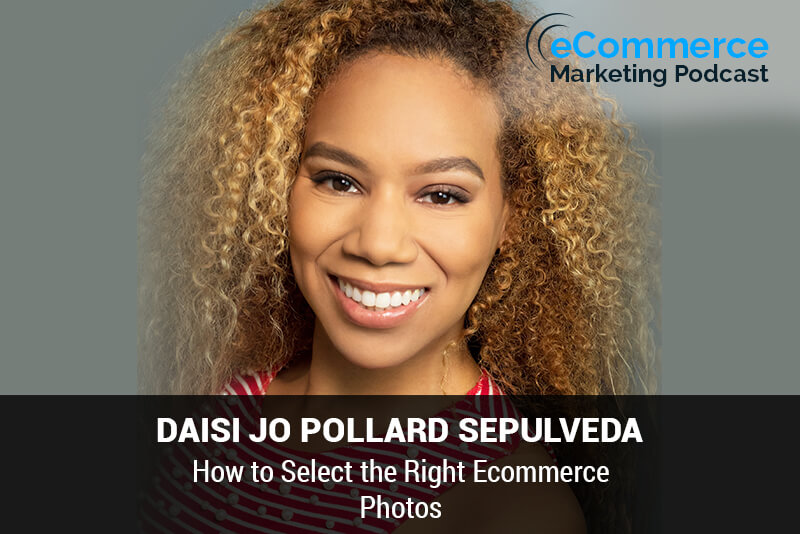
The eCommerce Marketing Podcast walks you through everything that goes into ecommerce marketing — from inbound marketing to paid advertising to conversions. Learn the strategies top marketing experts use to grow their businesses.
Marketing Strategies Revealed in this Episode:
- What makes a good ecommerce photo
- The difference between stock photos, manufacturer photos and original photos
- Using different photos for different platforms
- What is the difference between Product shots vs. editorial vs. lifestyle photos
- The equipment and resources needed for your own photoshot

Episode Title: Enhancing eCommerce with High-Quality Photos and Videos with Daisi Jo Pollard Sepulveda
Guest: Daisi Jo Pollard Sepulveda, Founder of My Product Model
In this episode of the eCommerce Marketing Podcast, host Arlen Robinson interviews Daisi Jo Pollard Sepulveda, an internationally known model and founder of My Product Model. Daisi shares her extensive experience in modeling and how it led her to establish a company dedicated to providing accessible, high-quality photos and videos for eCommerce brands. The discussion covers the essentials of creating effective eCommerce photos, the difference between stock, manufacturer, and original photos, and the importance of tailored visual content for different platforms.
Key Takeaways:
- Introduction to Daisi Jo Pollard Sepulveda and My Product Model (00:01:00):
- Background as a model and beauty pageant queen.
- Transition into eCommerce photography and founding My Product Model.
- Essentials of Good eCommerce Photos (00:08:00):
- Importance of lighting, equipment, and proper backgrounds.
- Using DSLRs vs. smartphone cameras for different purposes.
- Differentiating photos for websites, Amazon, and social media.
- Understanding Different Types of Photos (00:16:00):
- Stock photos: Generic and widely used images.
- Manufacturer photos: Provided by product manufacturers, often not tailored to specific audiences.
- Original photos: Custom content created specifically for the brand’s target audience.
- Creating an Effective Photo Shoot (00:25:00):
- Challenges of DIY photo shoots and the value of professional content partners.
- The importance of investing in quality content early in the process.
- Examples of successful brands that use high-quality, tailored images.
- Case Study: Targeting the Right Audience with Tailored Photos (00:34:00):
- Example of using plus-size models to better market to a specific demographic.
- The impact of tailored photos on sales and customer satisfaction.
- Fun Fact About Daisi Jo Pollard Sepulveda (00:45:00):
- Daisi is an avid distance runner and finds great joy in running.
Guest Information:
- Name: Daisi Jo Pollard Sepulveda
- Position: Founder of My Product Model
- Website: My Product Model
- Email: [email protected]











